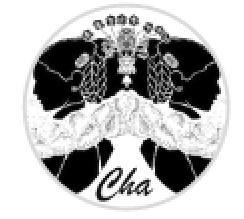📁 RETURN TO FIRST IMPRESSIONS
📁 RETURN TO CHA REVIEW OF BOOKS AND FILMS
Click HERE to read all entries in Cha on Owlish.
Dorothy Tse (author), Natascha Bruce (translator), Owlish, Fitzcarraldo Editions, 2023. 224 pgs.

I’ve always sensed that Hong Kong has a unique way of combining the old and new in ways few cities can pull off. When I walk through parts of Kowloon or the New Territories, I can still find many of the same buildings and shops I knew from decades earlier. And on one memorable day in 1996, a year before the Handover, I walked along the Tsim Sha Tsui waterfront with my mother and uncle, both of whom had spent time in Hong Kong in the mid-1960s. They pointed out all that had changed since then, yet when we walked up Nathan Road and approached Jordan Road, my uncle found shops still standing from 30 years before. I felt almost vindicated from an experience six years earlier when my grandmother sent me on a wild goose chase to find her favourite restaurant on Carnarvon Road from the “60s”. None of the shop owners in that labyrinth of TST knew what I was talking about, probably because the restaurant had actually been on Kimberley Road, but it was long gone nonetheless.
I can’t think of other places where I’ve felt so caught in the middle of the past and present. Dorothy Tse is known for her surreal stories and I was delighted to read her new book, Owlish, which epitomises this perfectly. Through her novel, she examines Hong Kong in what she describes in her afterword as “the intersection of dreaming and being awake” or in Walter Benjamin’s paraphrased words, “the past suddenly opens wide to the present”.
Owlish is the story of fifty-something Professor Q and his civil servant wife Maria who live in a magically realistic place that resembles Hong Kong. It was fun to figure out the fictional names and match them with their real counterparts. For example, Nevers is the name for Post-Handover Hong Kong and Ksana is China, while Southern is Cantonese language and Northern is Mandarin or Putonghua. Although Owlish is set in the present, Tse started thinking of this story over a decade ago. Professor Q’s concerns at his workplace, Lone Boat University, and Maria’s almost robotic devotion to her career as a civil servant have found a suitable place in the Hong Kong of today.
Professor Q has been rejected for tenure twice and is preparing to go before the review board a third time, hoping he will finally be successful. Academia has changed since he first started teaching, and sometimes Professor Q feels like he’s just going through the motions.
In his expensive, old-fashioned suits, his face fixed in an expression of unwavering calm, he showed up punctually to each faculty meeting and academic meeting. During these meetings he declined to comment on the vast majority of topics, in fact refused to talk at all unless it was absolutely necessary, and vanished the moment they were over. He considered this perfectly acceptable behaviour because, in his heart of hearts, he felt it was not really him participating in the meetings, but rather a suit-wearing, tie-sporting, flesh and blood mannequin version of himself.
A small detail at the end of this passage could be easily missed, but soon Tse will introduce Aliss, a ballerina doll who takes on a life of her own—and becomes the obsession of Professor Q. Ballet stories often take on a dark tone, and Owlish is no exception. Professor Q starts to neglect Maria, the only one of her group of friends whose husband has been faithful.
Owlish is also a character in the book, a friend of Professor Q’s and the person he claims pushed him toward Aliss. But he also uses the name Owlish when he introduces himself to Aliss. As he explains, the name refers to:
…something like an owl but also not like an owl. How can I put this? Do you know amphibians? Creatures that are somewhere in between aquatic and terrestrial—from an evolutionary perspective, a kind of transitional species. If an owl is a bird with a head like a cat, perhaps we should say Owlish is a cat with a head like a bird? To be Owlish is to be a bird that can’t fly, at least not at the moment, but who can climb tall trees and pretend to be a bird, borrowing its nest from other birds. For now, that’s what it must do to survive. But who knows what will happen next?
In Hong Kong, that’s always the question. No one knows what the future holds. Tse also includes commentary about the massive amounts of development in Nevers, which will destroy neighbourhoods that have till now resisted gentrification. And if the past truly becomes invisible, what can be done to preserve it? Professor Q may have an answer. Toward the beginning of the story, he says to Maria, “words are the best medicine” to keep a place and people alive.
How to cite: Blumberg-Kason, Susan. “Making Sense of Time: Dorothy Tse and Owlish.” Cha: An Asian Literary Journal, 08 May 2023, chajournal.blog/2023/05/08/owlish/.



Susan Blumberg-Kason is the author of Good Chinese Wife: A Love Affair With China Gone Wrong. Her writing has also appeared in the Los Angeles Review of Books‘ China Blog, Asian Jewish Life, and several Hong Kong anthologies. She received an MPhil in Government and Public Administration from the Chinese University of Hong Kong. Blumberg-Kason now lives in Chicago and spends her free time volunteering with senior citizens in Chinatown. (Photo credit: Annette Patko) [Susan Blumberg-Kason and ChaJournal.Blog.]



















